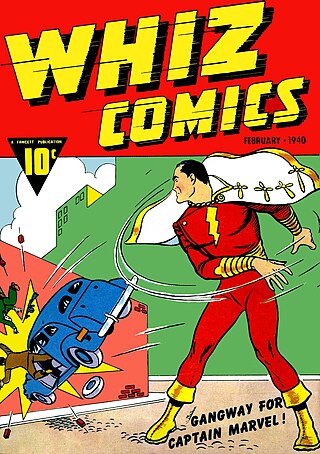
A superhero or superheroine is a stock character who typically possesses superpowers or abilities beyond those of ordinary people, is frequently costumed concealing their identity, and fits the role of the hero; typically using their powers to help the world become a better place, or dedicating themselves to protecting the public and fighting crime. Superhero fiction is the genre of fiction that is centered on such characters, especially, since the 1930s, in American comic books, as well as in Japanese media.
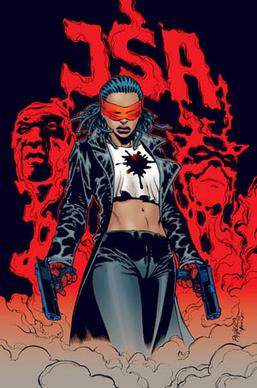
The Crimson Avenger is the name of three separate superheroes and supervillains in the DC Comics Universe. The character debuted in 1938 and is notable as the first masked hero in DC Comics.

John Ridley IV is an American screenwriter, television director, novelist, and showrunner, known for 12 Years a Slave, for which he won an Academy Award for Best Adapted Screenplay. He is also the creator and showrunner of the anthology series American Crime. In 2017 he directed the documentary film Let It Fall: Los Angeles 1982–1992.

Manhunter is the name given to several different fictional characters appearing in comic books published by DC Comics and Quality Comics. They are depicted as superheroes and antiheroes.
Young Allies is the name of three superhero teams appearing in American comic books published by Marvel Comics.
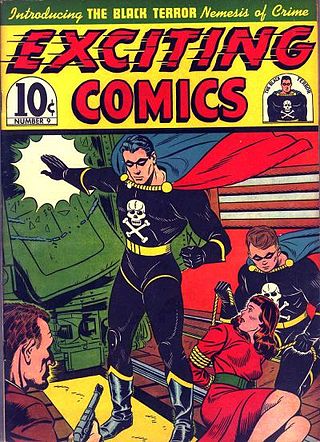
The Black Terror is a fictional comic book superhero who originally appeared in Exciting Comics #9, published by Nedor Comics in January 1941. The character was popular, and on the strength of the Black Terror's sales, Nedor made Exciting Comics a monthly magazine starting with issue #11.

The Shield is the name of several superheroes created by MLJ. Appearing months before Captain America, the Shield has the distinction of being the first superhero with a costume based upon United States patriotic iconography. The character appeared in Pep Comics from issue #1 to #65.
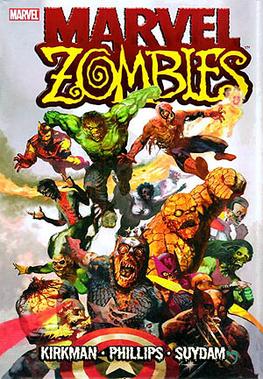
Marvel Zombies is a five-issue limited series published from December 2005 to April 2006 by Marvel Comics. The series was written by Robert Kirkman with art by Sean Phillips and covers by Arthur Suydam. It was the first series in the Marvel Zombies series of related stories. The story is set in an alternate universe where the world's superhero population has been infected with a virus which turned them into zombies. The series was spun out of events of the crossover story-arc of Ultimate Fantastic Four, where the zombie Reed Richards tricked his Ultimate counterpart into opening a portal to the zombie universe only for the latter to contain the former from ever coming to his universe.
The Ultraforce is a fictional superhero group that appears in American comic books published by Malibu, and later Marvel. The purpose of the group was to protect the public and keep other "Ultras" (superheroes) from becoming unruly.

The Fighting Yank is the name of several superheroes, first appearing in Startling Comics #10.
Discrimination against superheroes is a common theme and plot element in comic books and superhero fiction, usually as a way to explore the issue of superheroes operating in society or as commentary on other social concerns. Often in response to this are Registration Acts, fictional legislative bills that have been plot points used in various comic books and mediums which, when passed into law, enforce the regulation of extra-legal vigilante activity vs. criminal activity, or the mandatory registration of superpowered individuals with the government.

Blue Diamond is a fictional superhero appearing in American comic books published by Marvel Comics, debuting under the company's 1940s forerunner, Timely Comics. The character was created in 1941 by Ben Thompson, who also drew the first comic book adventures of Ka-Zar the Great and Citizen V for Timely, as well as the Masked Marvel for Centaur Publications and Dr. Frost for Prize Comics.

Spider-Man: Reign is a four-issue comic book limited series featuring Spider-Man, written and illustrated by Kaare Andrews and published by Marvel Comics. Set 30 years into Spider-Man's future, on Earth-70237, it features a retired Spider-Man who returns to combat the injustices of a vastly different New York City.

Superhero fiction is a subgenre of speculative fiction examining the adventures, personalities and ethics of costumed crime fighters known as superheroes, who often possess superhuman powers and battle similarly powered criminals known as supervillains. The genre primarily falls between hard fantasy and soft science fiction in the spectrum of scientific realism. It is most commonly associated with American comic books, though it has expanded into other media through adaptations and original works.
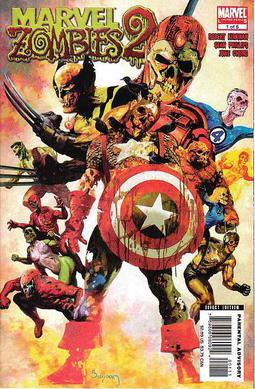
Marvel Zombies 2 is a five-issue limited series published from October 2007 - February 2008 by comics publisher Marvel Comics. The series was written by Robert Kirkman with art by Sean Phillips and Arthur Suydam. It is part of the Marvel Zombies series.

Power Man is a superhero appearing in American comic books published by Marvel Comics. Created by Fred Van Lente and Mahmud Asrar, the character first appeared in Shadowland: Power Man #1. Victor Alvarez is the third incarnation of Power Man. He is the son of the supervillain Shades.

Jupiter's Legacy is an American superhero comic book series, first published in 2013, written by Mark Millar, drawn by Frank Quitely, colored and lettered by Peter Doherty and published by Image Comics. Published as a series of eponymous limited series and interstitial prequel miniseries, it is to date the longest series that Millar had published as part of his Millarworld line of creator-owned comics, spanning an issue run three times as long as his then-most recent series, Supercrooks and Nemesis. It was also the first collaboration between Millar and Quitely since their work on The Authority in 2001, and Quitely's first long-form work with a writer other than Grant Morrison.

Jon Kent is a fictional character appearing in American comic books published by DC Comics. Created by Dan Jurgens, the son of Superman/Clark Kent and Lois Lane, he first appeared in Convergence: Superman #2. Jon is the newest character in the DC Universe to assume the superhero persona of Superboy, and later Superman. As Superboy and Robin, Jon and Damian Wayne appeared in several Super Sons comic book series featuring their shared adventures. Jon later takes on the Superman mantle and stars in the comic series Superman: Son of Kal-El.
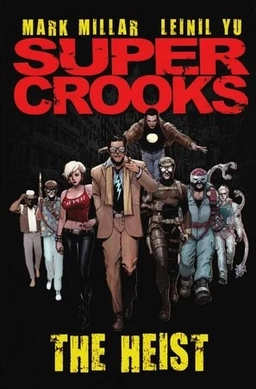
Supercrooks is a four-issue comic book limited series by writer Mark Millar and artist Leinil Francis Yu. The series was published by the Icon Comics imprint of Marvel Comics from March–August 2012.
















